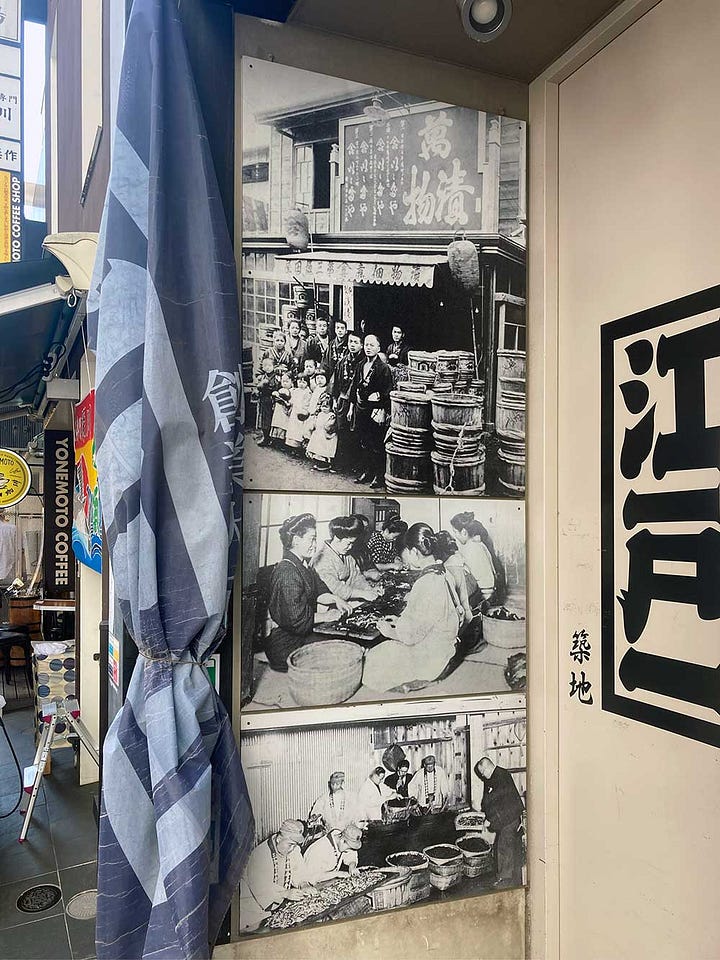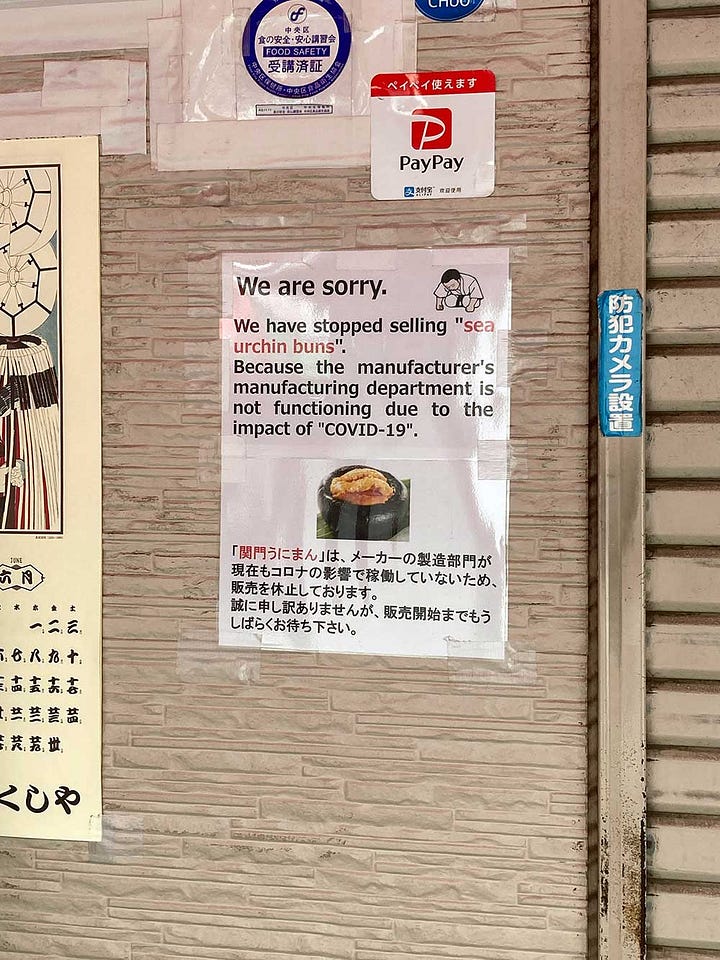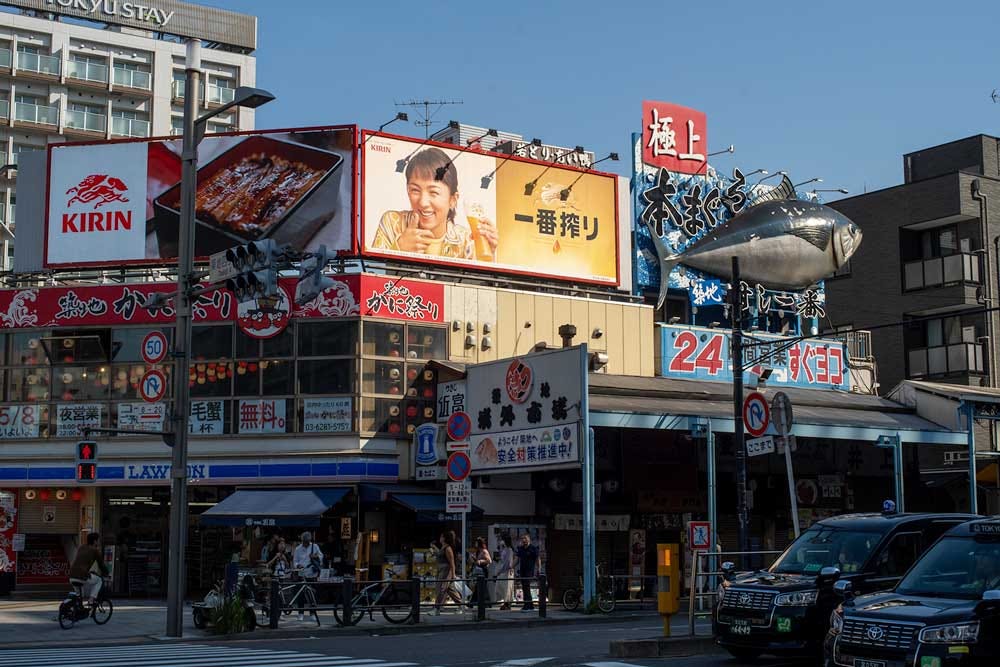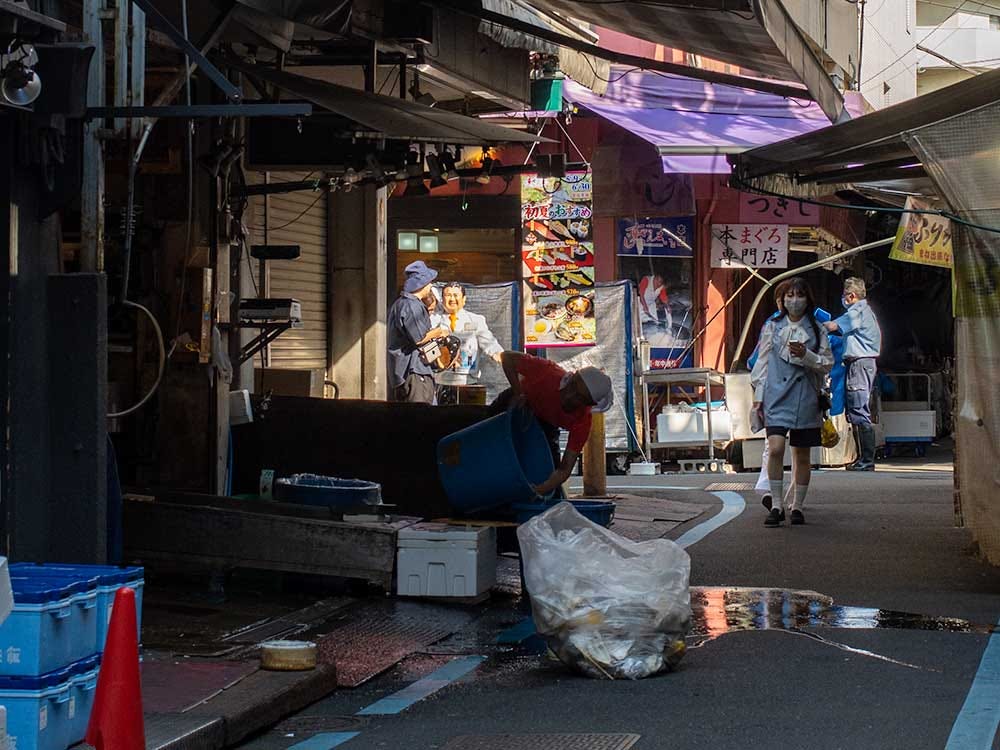Welcome to NOTEBOOK, a cultural guide to art, design and architecture, along with a resource of local news and information in English giving a realistic view of Tokyo and further afield.
05/17 – A small distillery in Chichibu, Saitama Prefecture, recently claimed its sixth whisky award at an international competition held in London. In Okinawa, a woman was arrested on Monday after approaching the U.S. consulate general brandishing what she claimed to be a pipe-bomb. In Hiroshima, the U.S. President Joe Biden will hold talks with Prime Minister Kishida tomorrow, when Biden and other leaders including the Brazilian President Lula da Silva descend on the city for this year's G7 summit this weekend.
Amid the heightened tension of these official visits, Notebook heads to the edge of Tokyo bay to wander the outer market of Tsukiji, once the largest wholesale fish and seafood market in the world. We arrive business winds down for the day and talk with the owner of Mejicafe, a cafe and coffee roaster along the market’s Yokocho-dori.
Tsukiji Fish Market on the edge of Tokyo Bay, Chūō ward, was once the largest wholesale fish and seafood market in the world, opening in 1935 having replaced an older market destroyed by the 1923 Great Kanto Earthquake.
The main inner market (where trading in wholesale fish took place) grew in popularity no more so than with tourists until the market decided to close doors to the general public. Of greater concern was the state of the inner market with market buildings in desperate need of repair. So in 2018 the market moved east along the edge of the bay to Toyosu, leaving behind the outer market of shops and restaurants for the general public to enjoy.
The name ‘Tsukiji’ literally means ‘fabricate’ and ‘land’ to describe the reclaimed land constructed following the Great Meireki fire of 1657. The Tsukiji Outer Market now stands on the edge of the old market site, a 15-minute walk from Ginza.
Fast forward to 2023 and stores now open from 4am, then close by 3pm. We walk through the block of shops caught between the streets of Harumi-dori, Monzeki-dori Namiyoke-dori, and deep within Tsukiji’s outer market along Yokocho-dori.




Edoichi is a manufacturing and wholesale business centered around Tokyo-style ‘tsukudani’, small seafood, meat or even seaweed that has been simmered in a mixture of shoyu and mirin.
Shops like Mejicafe, with what it claims to be the only roasting machine, are squeezed into every corner of the outer market. Others still bear the affect of COVID-19, with suppliers struggling to meet the demand for delicacies like ‘uni’ (sea urchin).
However, the market is showing every sign of bouncing back after several years of reduced trade. Weekends are now crammed with tour groups and lone tourists, a sight reflected by the recent ‘Golden Week’ holiday, which the owner of Mejicafe said was the busiest its been since border restrictions were lifted last October.
With the market open from as early as 4 am, a morning adventure is the best to experience the outer market in full swing, eat some of the best seafood Japan has to offer and then wash it down with earliest of drinks.
NOTEBOOK episodes are published 3 times a week: Monday, Wednesday, and Friday. We will add things here we couldn’t fit into each episode and use this space as somewhere to answer your questions when your here or thinking of visiting Japan.
It wont necessarily be chronological: we’ll dive back into previous episodes and expand on things that wouldn’t fit — you can only record so much.
We have recently been adding field recordings from different parts of the city, and different parts of the country, while interviews give us a chance to talk with other people on the places they might recommend (or not, for that matter).
And if you have an recommendations or requests, send an email (notebook.podcast@gmail.com) or voice message (speakpipe.com/notebook). Better still, Subscribe and add a comment below. Thanks for listening, thanks for reading, and feel free to use this as your NOTEBOOK.







